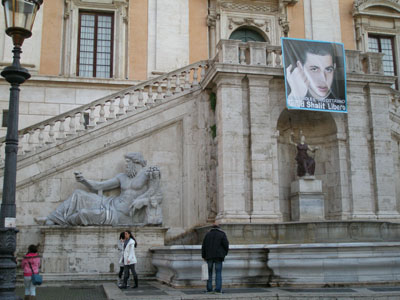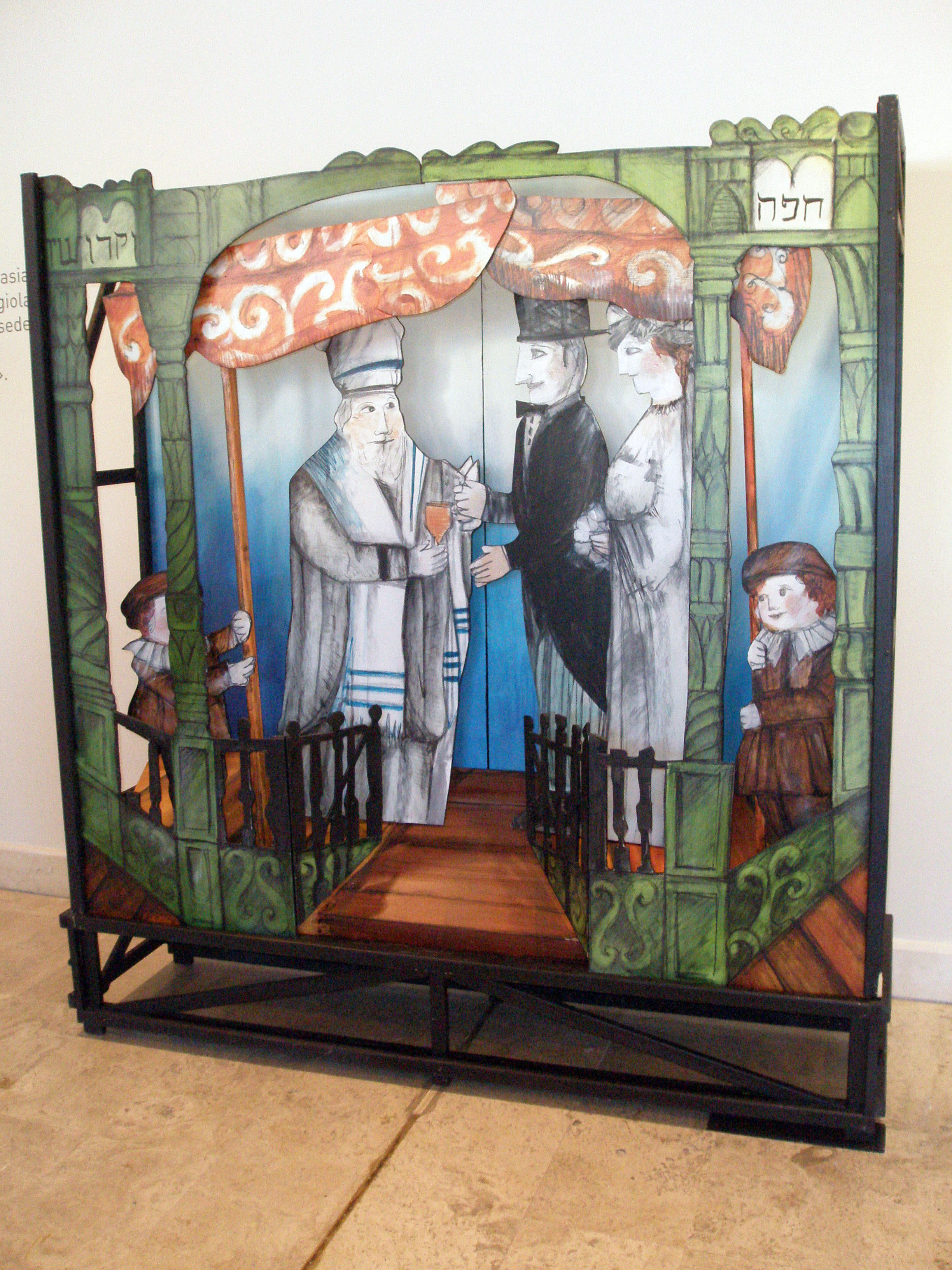 A sign demanding freedom for Israeli prisoner Gilad Shalit and an
A sign demanding freedom for Israeli prisoner Gilad Shalit and an
exhibit of Jewish Italian artist Emanuel Luzzati are highlights this
December in Rome

_______________________________________________________
Story by Ulla Hadar, Photos by Rafi Hadar
 ROME–Climbing the last few steps from the Forum Romano I entered the Piazza in front of the Palazzo Senatorio. My eyes opened up wide
ROME–Climbing the last few steps from the Forum Romano I entered the Piazza in front of the Palazzo Senatorio. My eyes opened up wide
Viewing a huge picture of the imprisoned Israeli soldier Gilad Shalit,
With the words in Italian asking for his freedom and release.
This was the least expected here in a city full of ancient history, and ancient buildings and ruins all breathing the story of the Roman Empire. This warmed my heart and filled me with joy to see that thisimprisoned Israeli soldier has not been forgotten and is cared for even outside the borders of Israel.
Later in my visit I returned again to this square and confirmed that the picture still hung there and that was not only “for the day”. I had a chance to enter the elevator situated on the Vittoriano building also known as the “Typewriter” for a
a breathtaking and magnificent View of Rome from all angles at the top of the building.
A couple of seagulls lined up for the tourist and took the oppportunity to act as models for those who cared to take a picture of them.
The reason for me being in Rome was that the 8th of December was the second commemoration of my husband’s late uncle, the Jewish Italian artist Emanuele Luzzati. This year the commemoration took place in the Roman Auditorium, the Park of Music, where a large exhibit of all his works, including ceramics, animation, stage sets,
costumes, graphics and prints is being presented throughout December.
The exhibition is called “Fantasy”. Once Luzzati was asked what fantasy means to him and he replied: “To think that a chair is not something you sit on, but put a hat on it and it can turn into a man.”
At the exhibition a special section is dedicated to the Jewish aspect, which was an important part of Emanuele Luzzati’s life. As Francesco Maria Giro, Underseceretary of the Ministry of Cultural Heritage and Activities, described it: “Lele Luzzatis’s talent and sensitivity were in fact best expressed in the act of making and therefore in the applied arts. Using the most modest and simple tools available (scissors, paper, glue, paintbrushes, colors, pencils, broken furniture and old scraps of cloth) he forged marvelous theater sets, exhuberant and colorful illustrations, fantastic worlds thinly balanced between the real and the surreal. This translated into a work both physical and fanciful, where reality and fantasy side by side, worked to fill this treasure chest we have inherited.”
He summed up : “Luzzati’s character holds an exhaustible imagination merged with exceptional craftsmanship.”
An additional exhibition in Rome for the moment is a collection of around 100 exceptional fresco painting collected from museums in Frankfurt, Rome, Zurich, London, Pompei and Paris. These paintingsand artworks Originate from the period between the 1st century BC to 5th century AD and shows exceptional elegance and refinement.
The exhibition reveals all the themes of antique painting by means of
great frescoes, refined portraits on wood, decorations, friezes and views of great vitality recovered from both the patrician domus and the ordinary home or shop. The exhibition is situated at the Scuderie del Qurinale and continues to mid January.
*
Hadar is San Diego Jewish World’s bureau chief in Sha’ar Hanegev, Israel. She may be contacted at hadaru@sandiegojewishworld.com. To see an Italian television piece on the exhibition, click here.
